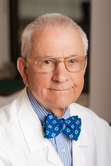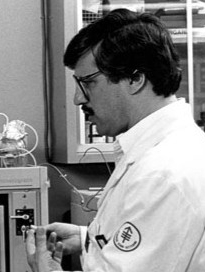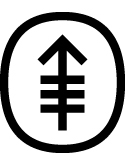| Abstract: |
Long-term subcutaneous (s.c.) administration of recombinant Interleukin-2 (rIL-2) was evaluated in 18 patients with advanced malignancy who received escalating doses of rIL-2 (1.0–9.8 ± 106 U/m2) s.c. five times per week for a median of 38 days (range 5–228 days). Prior to the s.c. phase of the study, 24 patients received low doses (50 or 350 mg/m2) of cyclophosphamide (CPM) i.v. on day 1 followed by 10 doses (days 5–9 and 12–16) of rIL-2 (1 ± 106 U/m2) given by 6 h i.v. infusion. There were no major antitumor effects. Toxicity was not clearly dose-related, with pain and induration at s.c. injection sites, fatigue, malaise, and palpitations most often observed. Pretreatment baseline ranges (PBR), which are 95% prediction intervals that reflect both intra- and interpatient variability, were calculated for nine hematologic and immunologic variables derived from 21 of the 24 patients. While pretreatment with CPM had no significant effect on these variables during the i.v. phase of the study as compared to a prior study using an identical rIL-2 i.v. infusion schedule, prolonged administration of s.c. rIL-2 was associated with (a) enhancement of natural killer (NK) cytotoxicity against K562 in 13 of 21 patients (p < 0.00001), (b) increases in cytotoxicity against K562 (15 patients) and against Daudi (9 patients) in the presence of 10 U/ml of rIL-2 (p = 0.007), (c) increases in the proliferative response in vitro to OKT3 and rIL-2 in 12 patients (p < 0.00001), (d) lymphocytosis with increase in percentage of Tac (13 patients, p < 0.00001), T8 (11 patients, p = 0.0005), and T9 (8 patients, p = 0.021) expression, and (e) eosinophilia. While initial rises in some of these variables oc. © 1988 Raven Press, Ltd., New York. |
| Keywords: |
clinical article; fatigue; cancer patient; comparative study; neoplasms; t lymphocyte; t-lymphocytes; interleukin 2; pain; nausea; cyclophosphamide; cytotoxicity; time factors; fever; heart palpitation; hypotension; antibodies, monoclonal; cellular immunity; immunotherapy; drug therapy, combination; indometacin; recombinant proteins; cytotoxicity, immunologic; phase 1 clinical trial; enzyme-linked immunosorbent assay; drug therapy; injections, subcutaneous; intravenous drug administration; interleukin-2; antigens, surface; random allocation; mitogens; immunity, cellular; middle age; drug evaluation; subcutaneous drug administration; human; male; female; support, non-u.s. gov't; support, u.s. gov't, p.h.s.
|







